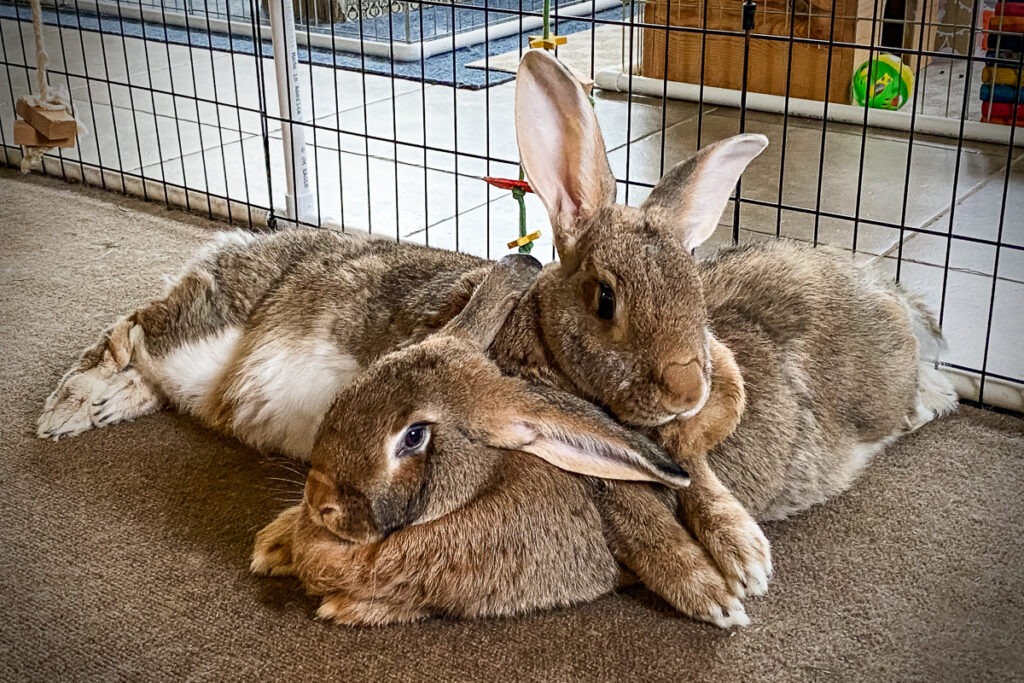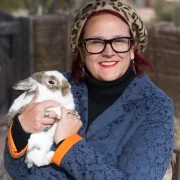Boys and girls are socialized differently while growing up and make the transition into traditional roles of breadwinner/professional and mother/wife. With this in mind, we assume that women perform the primary care-giving role with the house rabbit (as with the kids), and they form the strongest bonds with the bunny. Following this same train of logic, it’s most often the men who aren’t willing to give that extra understanding and care that is often so necessary with a house rabbit (particularly a chewer or a digger).
I have found, in my relationship with my husband, that having large numbers of animals living with us has not only put a strain on our relationship at various times but has also served as a form of “couples therapy” as well. With each piece of furniture that has been destroyed; each time we had to avoid the urine puddles in our bed at night; each time we’ve spent 300 dollars at the veterinarian for a rabbit I picked up at the pound; there has been some initial resentment on the part of my husband. But ultimately he, too, has learned the value of caring for other creatures who need so much, despite the mess and financial strain an operation such as ours entails. As he begins to work as hard as I do-changing bandages, administering medicine, mopping up urine pools, and cleaning litterboxes, he becomes a more caring individual. I honestly feel that if more men, whose first reaction to seeing a hole in the couch is to get rid of their bunny, would instead work harder to help the bunny find alternatives to chew, as well as, learn to compromise and accept some things rather than change them, the added sensitivity and understanding that this would bring them could only be a positive thing.
©Copyright Margo DeMello. All Rights Reserved. Republished with the permission of the author.
This essay was first published in House Rabbit Journal Volume II, No. 6

